John Hurrell – 22 September, 2020
These sensual works—with their pre-programmed mark-making methodology—seem to be a form of surrealism. Dreamlike, they look gorgeous with their impeccable rows of marks that are a perfect ‘tesserae' size within the 900 x 800 mm canvases. They are also baffling. As mysterious objects, they would be very rewarding to live with: because of the way they constantly prod the ocular imagination when what Ingram calls “out of range” forms start being shaped by associative mental templates.
The seven (mainly) coloured robot-generated paintings Simon Ingram presents here in the back room of the Gow Langsford Kitchener St Gallery, carry on from his works on paper exhibition a year earlier at Bowerbank Ninow. With the added colour and switch to canvas these newer works look now more like a type of weaving than a sort of Pointillist etched print.
Using found photographic images that are filtered through a reordering brush-mark programme, the resulting paintings are highly ambiguous in terms of recognisability. Each viewer creates their own interpretation. For me, Chest Fountain Barber Chair is about high-rise city architecture, Stonewall Alp Cliff a pirate with a parrot on his shoulder, Radio Telescope Television a helmeted spaceman in a computer lab, and Kelp Mountain Lamp a group of farm animals balancing on a plinth. Chances are (if you visit) you will disagree with me entirely.
These sensual (minutely modular) works—with their pre-programmed mark-making methodology—seem to be a form of Surrealism. Dreamlike, they look gorgeous with their impeccable rows of marks that are a perfect ‘tesserae’ size within the 900 x 800 mm canvases. They are also baffling. As mysterious objects, they would be very rewarding to live with: because of the way they constantly prod the ocular imagination—when what Ingram calls “out of range” forms start being shaped by associative mental templates.
Interestingly—to analyse the robotic process (not the viewer’s mental ones)—when comparing the 2019 black and white version on paper of Stonewall Alp Cliff with the 2020 coloured canvas version, whilst the brush-marks are identically positioned, colour and types of grey are not correlated via tonal value. In other words, Ingram is using a 2D spatial / topographical (mark-positioning) correlation, not that of intensity of reflected light.
Ingram here is teasing his audience. Two other works (again, one black and white, the other coloured) are tonally correlated, for both Kelp Mountain Lamp and Mask Volcano Pyjama have very similar (but not identical) brushmark positioning formations. He has presented them as different entities.
These intriguing paintings owe a little to James Cousins in the way that viewer distance is a key factor in mental engagement, though not as extreme. Each work’s modular peculiarities—where the repeated (different-shaped) brush-formed ‘dots’ are arranged in horizontal rows—exert a constant pull as indicator of a ‘controlling’ robotic intelligence; a scheming mastermind planning image disruptions for his ‘slaves’ to execute in his studio.
John Hurrell
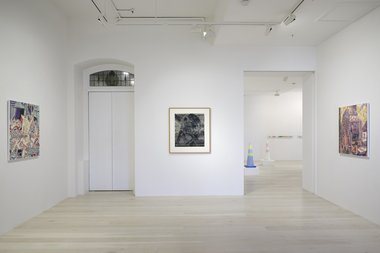
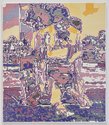
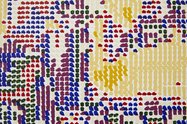
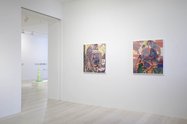
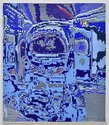

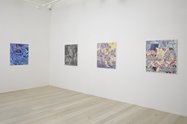

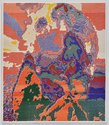
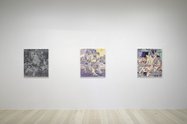
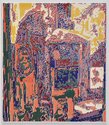
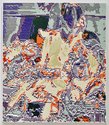
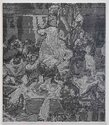
 Advertising in this column
Advertising in this column Two Rooms presents a program of residencies and projects
Two Rooms presents a program of residencies and projects



This Discussion has 0 comments.
Comment
Participate
Register to Participate.
Sign in
Sign in to an existing account.